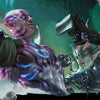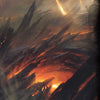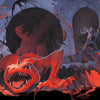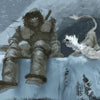10 Reasons No One Plays High-Level D&D
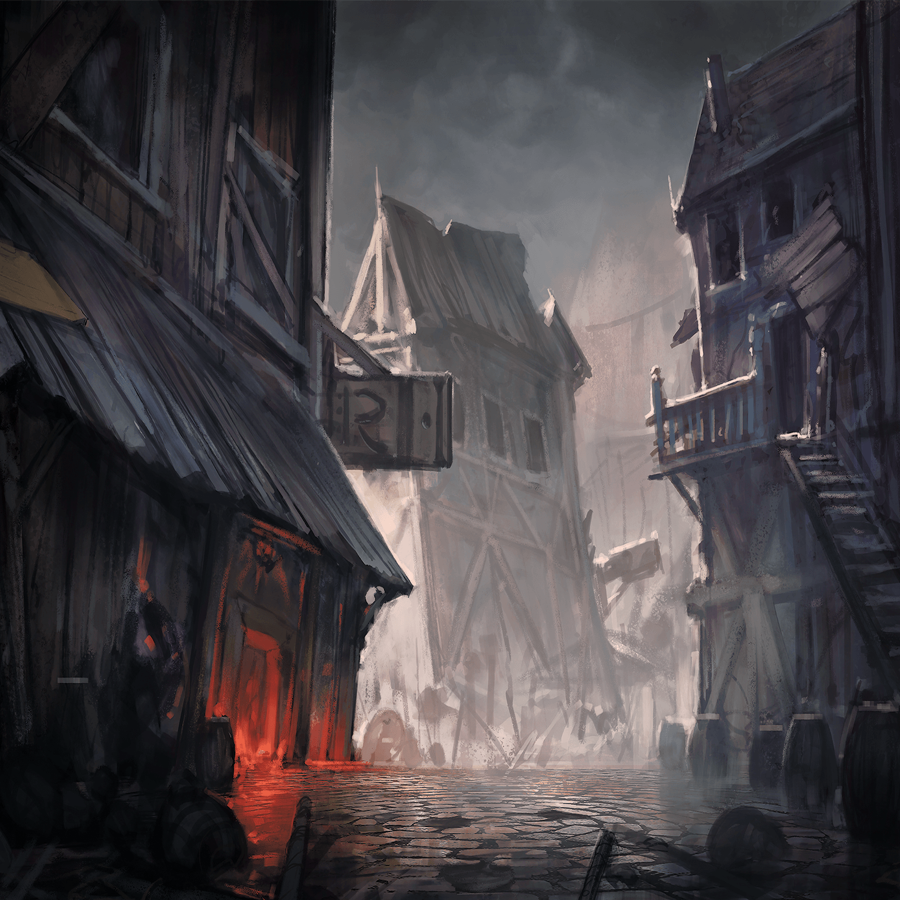
Written by Luke Hart
I have now run three D&D 5e campaigns that have gone from level 1 all the way up to the high levels. My Hand of Light campaign ended at level 20. My Sword Coast Guard campaign ended at level 17. Currently, the Ancient Dragon campaign I run for my patrons is at level 18. So, I can tell you from experience that most people don’t play D&D at high levels for a reason—besides the simple fact that most campaigns fizzle out after a few game sessions.
And I can guarantee you that Wizards of the Coast game designers know this, too. The real question is: Are they going to fix these problems with the new edition that’s not a new edition they’re releasing in 2024/2025?
By the way, if you’re looking for a low-level, fifth-edition adventure module, check out Into the Fey. It’s designed for levels 1 to 5 and features lots of new fey creatures and their tricksy plots. Pick up the Into the Fey Ultimate Bundle to get the hardcover, the PDF, digital maps, and digital tokens!
Watch or listen to this article by clicking the video below.
#1 It’s exceptionally hard for game masters to create balanced encounters and adventures.
Volumes have been written on how bad the challenge rating system is. Balancing encounters using the challenge rating system becomes more difficult around level 8 and mostly useless after level 12. At that point, you’re really just guessing! I mean, my players may think I look like I know what I’m doing, but that’s just my poker face. I’m actually living a life of quiet desperation as a game master in high-level play.
The thing is, when creating encounters at higher levels, unpredictability can cause encounters to be unintentionally deadly or anticlimactically easy. I have had a party easily handle an encounter that is four times deadly, then nearly TPK to a moderate challenge. I crap you not, and it is mind-boggling to see that happen.
Furthermore, the magic items a group has access to—or not—can make encounters trivial or deadly, as can simple things like whether the group gathered information about the foes in advance. Were they prepared?
Let us not forget, either, that a single spell can significantly change the threat level of the encounter. The forcecage spell, for example, can take a dangerous melee combatant—even something like a dracolich—out of combat because they don’t have access to teleportation magic, drastically changing the threat level of the adventure with a single action.
And we’re not even talking about the slew of other high-level spells players and monsters might bring to bear: arcane eye, dimension door, teleport, legend lore, power word kill, and, of course, wish.
Sometimes, spellcasting at high levels just comes down to who has more counterspells because the first spell to get through will be devastating.
#2 High-level spells and abilities ruin the fun of the game.
Storytime: In my Ancient Dragon game, my players inadvertently unleashed three Servants of the Void—they keep calling them hags—from a jar where they had been imprisoned for hundreds of years. Naturally, these hags began doing evil stuff, the principal of which was beginning a process that would see the entirety of the Dark Shards consumed by the Void—a not-so-good thing. However, my players have access to the wish spell—actually, several different wishes via magic items—and they were discussing the idea of just wishing the hags had never been released from their jar.
So, as the game master, I was faced with the time-old conundrum: Do I somehow twist their wish so it doesn’t do exactly what they wanted and complicates their lives even more? Or do I let it work, thus undoing hours of my game prep time? In other words, do I nerf the spell or allow it to invalidate all my hard work? And the irony of the whole situation is that if you analyze it from the meta and they wish away the hag problem, they are literally just skipping that part of the game. They would be noping out of the adventures planned along that storyline. So, it rather feels like a lose-lose situation: They don’t get to play the game, and I, as the GM, wasted a bunch of my time preparing those adventures. This begs the question: Why do it?
You might say, “Well, Luke, maybe they didn’t like that storyline and wanted to do something else.” And that’s fair, but let me say this. Up until that point, they had been presented with this the basic storyline that nine evil overlords must be defeated, and they had been going from one to the other, clearing out the dungeons and killing the overlords. After a few adventures of doing that, I thought we needed to shake things up because it was probably getting monotonous for my players. Thus, I introduced the quandary with the Servants of the Void. So, I would argue that this new twist was probably more exciting than just going back to taking out overlords. At any rate, my players never did use that wish—much to my relief.
That’s one example of how spells and abilities can “break the game,” invalidate GM work, and arguably make the game less interesting—partly because they allow players to win without really playing. It’s like a big skip button they can push.
Another example is if the GM plans a series of encounters only to have the players teleport past them. The players then enter the final fight without using any significant resources, turning a challenging, climactic battle into an unmemorable sweep. This also, by the way, can also make the GM feel like they wasted hours of preparation.
However, besides the skip button issue, there’s another general issue with high-level spells: although players love using high-level OP spells on the bad guys, they often hate it when the GM uses the same spells on them.
For instance, the forcecage spell can take a major monster out of the fight, which makes players feel awesome. However, if a player’s beloved barbarian is completely neutered by a forcecage, it can ruin an entire session for that player. You see, players don’t like sitting at the table watching their friends play any more than the DM likes his monsters to be completely useless. It’s a double-edged sword that cuts both ways, making the game less fun for players and game masters.
Well, you might say, the game master just shouldn’t use those spells on the players’ characters then—and you’re right, GMs probably shouldn’t. However, where does that leave the GMs? Holding the bag, that’s where. Doing the prep work, facilitating the game for everyone, and then getting screwed when their monsters are wished away, forcecaged, banished, plane shifted, and the like hardly seems fair now, does it?
Well, you might say the game master could just add more monsters or take measures to counter those spells. And you’re right, of course, but then we’re delving into the territory of invalidating characters’ spells and special abilities, which just takes us into another problem.
Frankly, the only real solution I’ve found as a DM running high-level D&D 5e is a truce, an armistice, between the game master and players that no one will use spells or abilities that ruin the fun for the other side. Otherwise, we just find ourselves in an arms war with the losing side not having fun.
#3 The game is too easy for the players and too hard for the dungeon master.
Fifth edition D&D is designed in such a way that characters are incredibly powerful and, in the higher levels, become invincible superheroes. Now, yes, while being awesome feels, well, awesome, when there is no challenge in the game, many players find it unsatisfying. It’s not that they don’t want their superpowers; it’s more that they want the encounters and adventures to be more challenging. However, that can be exceedingly hard for dungeon masters to pull off.
First, most monsters aren’t strong enough to challenge high-level characters. Less than 10 percent of the creatures in all 5e monster books are CR 17 or higher, and even high CR monsters fall flat and will get whomped on unless they have four or five minions with them.
I can tell you, though, that with experience, you figure out how to get around this and craft challenging encounters using the creatures in the books. However, the new dungeon master who thinks they can stick one CR 24 monster against five level 17 characters and have it be challenging just because the challenge rating calculator says it’s a deadly encounter will be sorely disappointed. Because every experienced DM knows the PCs will kill that monster in just a couple rounds without even breaking a sweat. So, I really feel for new DMs who have to deal with this. I bet that makes them prefer low-level play, don’t you think?
Furthermore, the issue of the game being too easy for players and too hard for the DM to run is compounded by the issue of high-level spells that we just discussed. I mean, everything just adds up, doesn’t it?
#4 There isn’t much published content for high levels.
Wizards of the Coast has published three adventures for parties of over level 15, and only one of these, Dungeon of the Mad Mage, is a cohesive adventure from low to high level. The other two appear in “collections” of adventures, Candlekeep Mysteries and Tales of the Yawning Portal. The upcoming “Planescape” set is supposed to have an adventure for level 17 characters. Still, again, that doesn’t seem to be part of a larger adventure. What this means, of course, is that dungeon masters who don’t want to homebrew their own adventures are crap out of luck.
So, you might be asking: Why doesn’t WOTC publish more high-level adventures? Well, I’ll tell you why, but it probably differs from what they’ll say. I suspect the official reason is, “We’ve done surveys, and most players say they enjoy low- and mid-level play more. Therefore, we are just giving players what they want.” And my counter to that is to ask, “Why do you think players enjoy low- and mid-level games more? Could it be because the higher levels—say, after 12, and certainly level 15—are mostly unplayable for the various reasons we’re discussing?”
Now, I think the folks working at WOTC are very smart and undoubtedly know about this. They also know that designing adventures and modules for high-level play is extremely challenging. After all, how do you design an adventure for a GM to run when the players could just use their powerful abilities and spells, thus causing the GM to have to throw out practically everything in the adventure and improvise on the fly? Now, I’m not knocking improvisation. I’m saying that when a GM buys a module, they want to be able to use it, not just have to homebrew everything anyway.
If you look at some of the old-school modules and even some modern ones, they acknowledge the game-breaking nature of many of these spells by specifically banning them in the adventure. Of course, they may not have banned them outright, but they put story reasons into the adventure that made them not work. In Ravenloft, plane travel just doesn’t work. Why? Oh, because of dark powers, that’s why. Certainly not because plane travel would make escaping Ravenloft trivial and thus invalidate the entire module.
#5 The incredibly low chance of character death makes combat less thrilling.
At higher levels, death is rarely permanent. If a character somehow manages to die (which, by the way, is nearly impossible), they’ll be resurrected again before anyone bats an eye. As long as one character with a raise dead spell survives a near-TPK or one character can load the bodies into a cart and haul them all back to town, the entire party will likely come back . . . and if most of the body is missing, there’s always reincarnation.
Fun fact: In my in-person group, we have an ongoing joke about whether or not a character is wearing a “do not reincarnate” bracelet. In part, this is because some players would rather just roll a new character than risk their character coming back as a species they don’t want to play—or one that breaks their build.
I’ve made entire videos about this, so I won’t belabor the point, but in combat, risk equals reward, and a game with no risk is boring. Most board games have a way to win or lose; a game you can’t lose isn’t as exciting. Competitive sports are only popular because fans want their teams to win and feel the agony of defeat. Well, the same thing applies to TTRPGs.
#6 Combat is a slog at higher levels.
Anyone who has played high-level D&D can attest to how long combat often takes; it isn’t unusual for combat to take one to two hours. If it’s a boss fight—shoot, I’ve had those last a full four-hour game session.
Why does this happen? I think there are a few reasons. First, player and dungeon master turns just take a whole lot longer. There are more spells, abilities, and options to consider, and adjudicating them takes longer. Next, hit point pools are much higher for both players and monsters. Now, you would think that it wouldn’t matter because damage is also scaling, and yes, it does, but not nearly as much as hit points. The result is monsters that just take a long time to go down.
Of course, we could just reduce hit points and increase damage to get the same challenge, and that’s certainly a good option. And if you’re a game master with enough spare time to homebrew every monster or tweak the existing ones to do that—and enough experience to get the challenge level right—knock yourself out. However, it begs the question: Why don’t the game designers just design monsters that way to begin with?
I’ll tell you why. Because they know that players enjoy inflicting damage on enemies but do not enjoy taking damage. So, since one is more fun than the other, we get enemies that are big sacks of hit points and do less damage. The trade-off, of course, is that combats take a lot longer.
#7 Characters get more complex.
The higher a character’s level in level-based games like D&D, the more complicated they become; players have many more abilities to remember, spells to learn (or look up), and magic items, potions, and scrolls to track. Character sheets become more cluttered, and classes require a lot more “going to the book” for clarification.
Even if a player has been playing a character from level 1, the plethora of abilities can make a character hard to play. This is even worse for high-level one-shots or if a character dies and a new character joins that already has a sheet full of options.
This high level of complexity is undesirable to some players and undoubtedly slows the game down, which could make it less exciting.
#8 Math gets more complex.
Math is the least popular subject in school, and as levels get higher, math becomes more complex. For instance, spells result in more dice rolled for damage, which requires more adding; it slows the game down if a player can’t calculate quickly. A classic example is the rogue with 10d6 sneak attack damage, who gets a critical hit. You’d be surprised at how long even a wizard upcasting magic missile can take to add up the damage. It’s a noticeable bog on the game at times.
But then you need to add and subtract hit points, of course, slowing things a bit further. There is a reason I gave up keeping track of exact hit points on my monsters years ago. Now, I track hit points in multiples of ten. It speeds up the game a lot.
The easy solution is to shout, “Be smarter” or “Learn to add,” but the truth is that such talk just makes people who aren’t great at math feel worse and enjoy math even less. Math is a genuine source of anxiety for a lot of people, and high-level play doesn’t help with that.
#9 Players get bored and want to play new characters.
A lot of players believe that half the fun of RPGs is making new characters; DND Beyond’s servers are loaded with characters that have never been played. I once had a player who wanted to change characters every game session—I crap you not. I had to make a rule that he couldn’t change a character in the middle of an adventure—that’s how bad it was.
For many players, the longer they live in a character’s skin, the more likely they will get bored. Even our favorite TV shows get stale when it’s the same week after week. Players want to try new things, and new ancestries and classes are a constant temptation—especially if they see another person playing an awesome class they’re interested in trying. The same can be said of game masters. Sometimes, a campaign just gets dull; they become bored and want to do something new. Of course, this is not necessarily a failing of the game system; it’s just one of those “it is what it is” situations, I guess.
#10 The story reaches a logical conclusion and a new one is desired.
If you’re playing a campaign with a single “big bad” with a beginning, middle, and end—a narrative game rather than a collection of unrelated adventures—eventually, the story will come to a logical end. Players and GMs alike are rarely interested in playing a game past the end of the narrative, and very few games start a “new” story with high-level characters after the original story ends, though they could, I suppose. However, it often doesn’t feel natural, and it would probably be better to just start a new campaign with low-level characters instead.
A 5e Adventure Module Filled with Fey Creatures and Their Tricksy Plots!
If you’re looking to start up a new 5e campaign or reboot your current one, Into the Fey may be exactly what you need. Designed for levels 1 to 5, Into the Fey contains everything you need to start playing:
- 11 fey-themed adventures
- over 40 new fey creatures
- the fully fleshed-out starting town of Aeredale
- regional information and maps for both the material and fey planes
Pick up the Into the Fey Ultimate Bundle to get the hardcover, the PDF, digital maps, and digital tokens.
Starting a new campaign can be tons of work; let Into the Fey do some of the heavy lifting for you!
-
Posted in
Game Master How-To Articles



